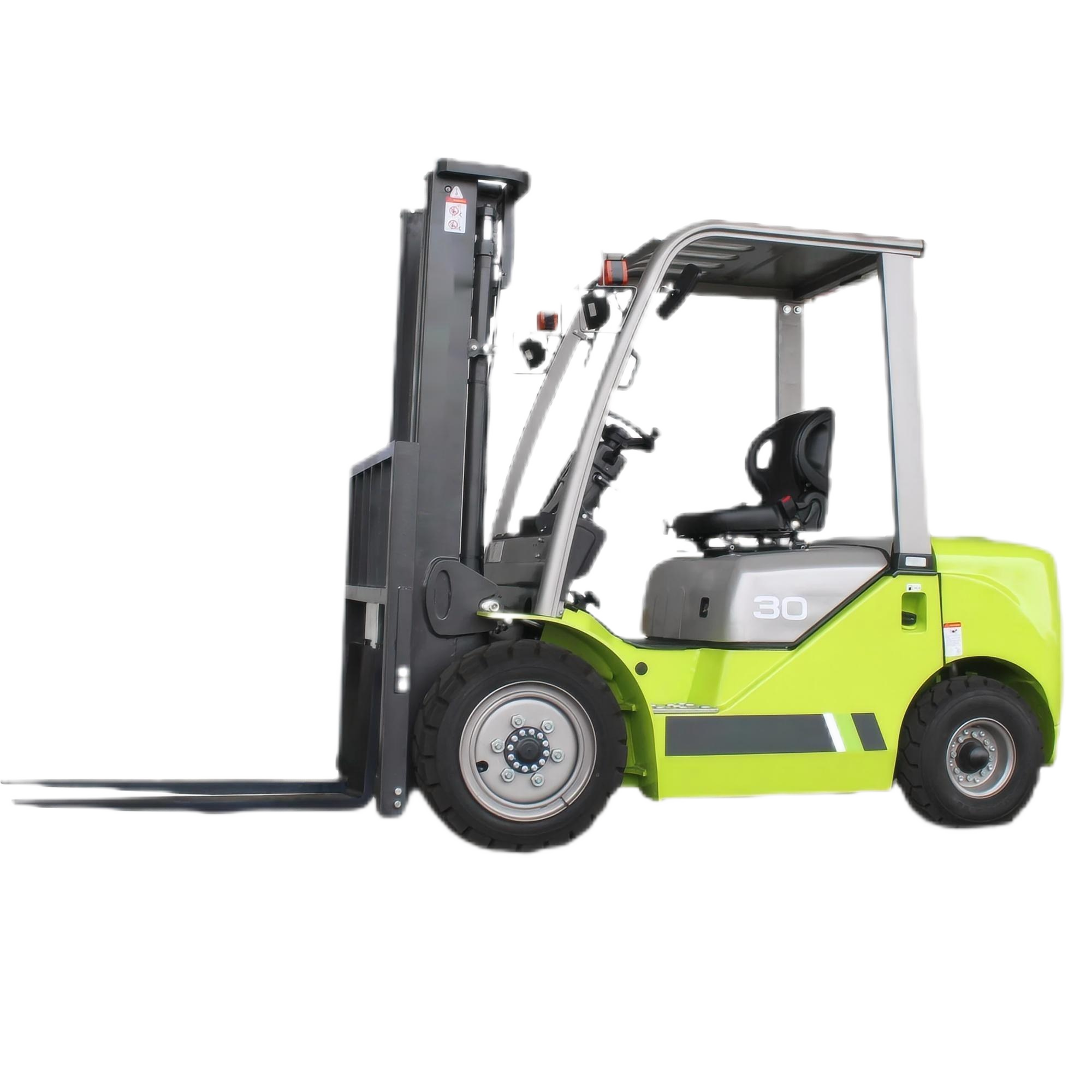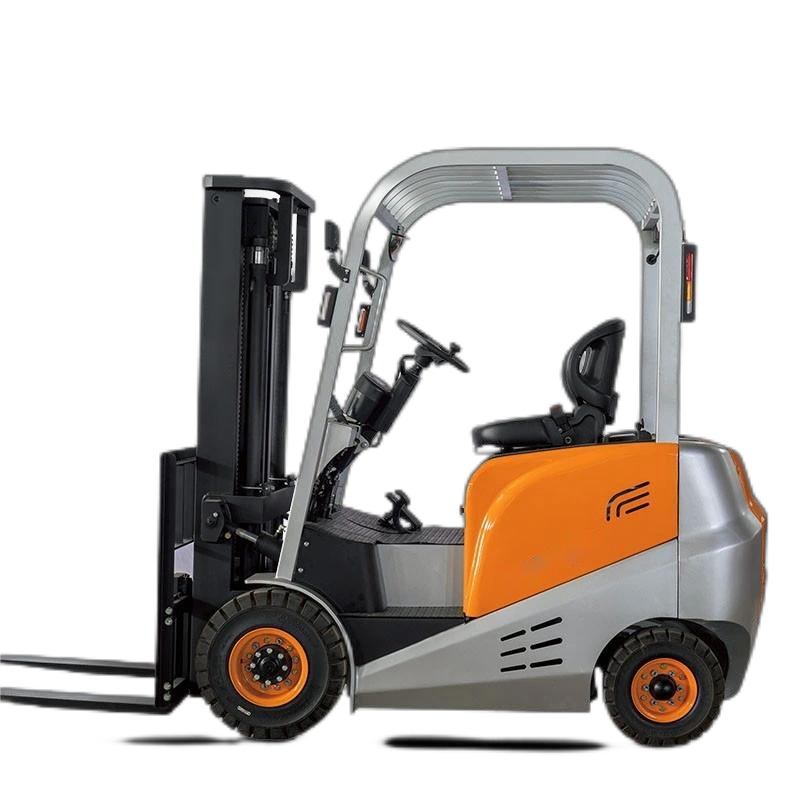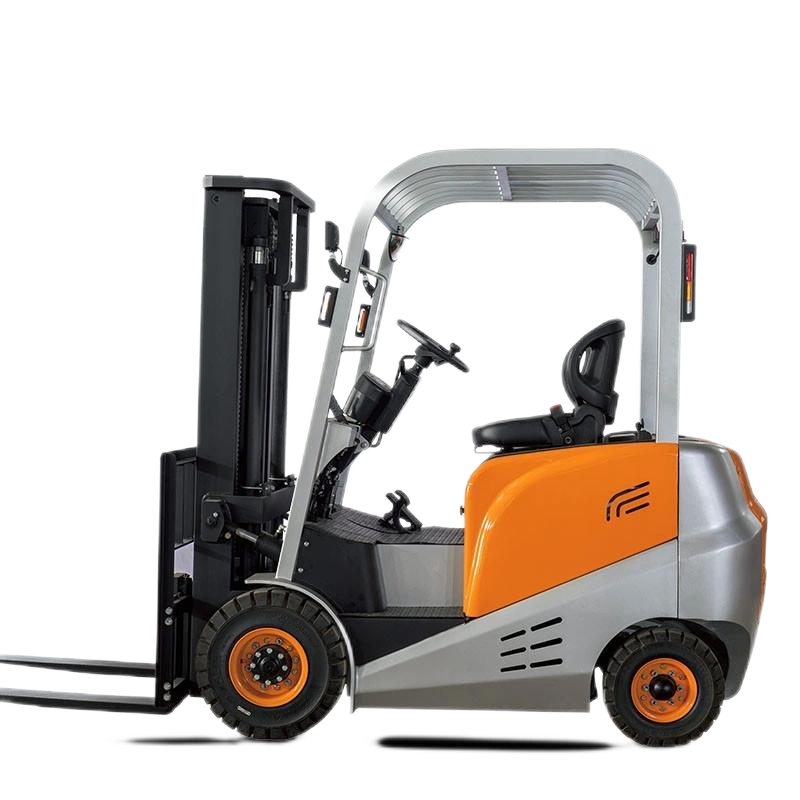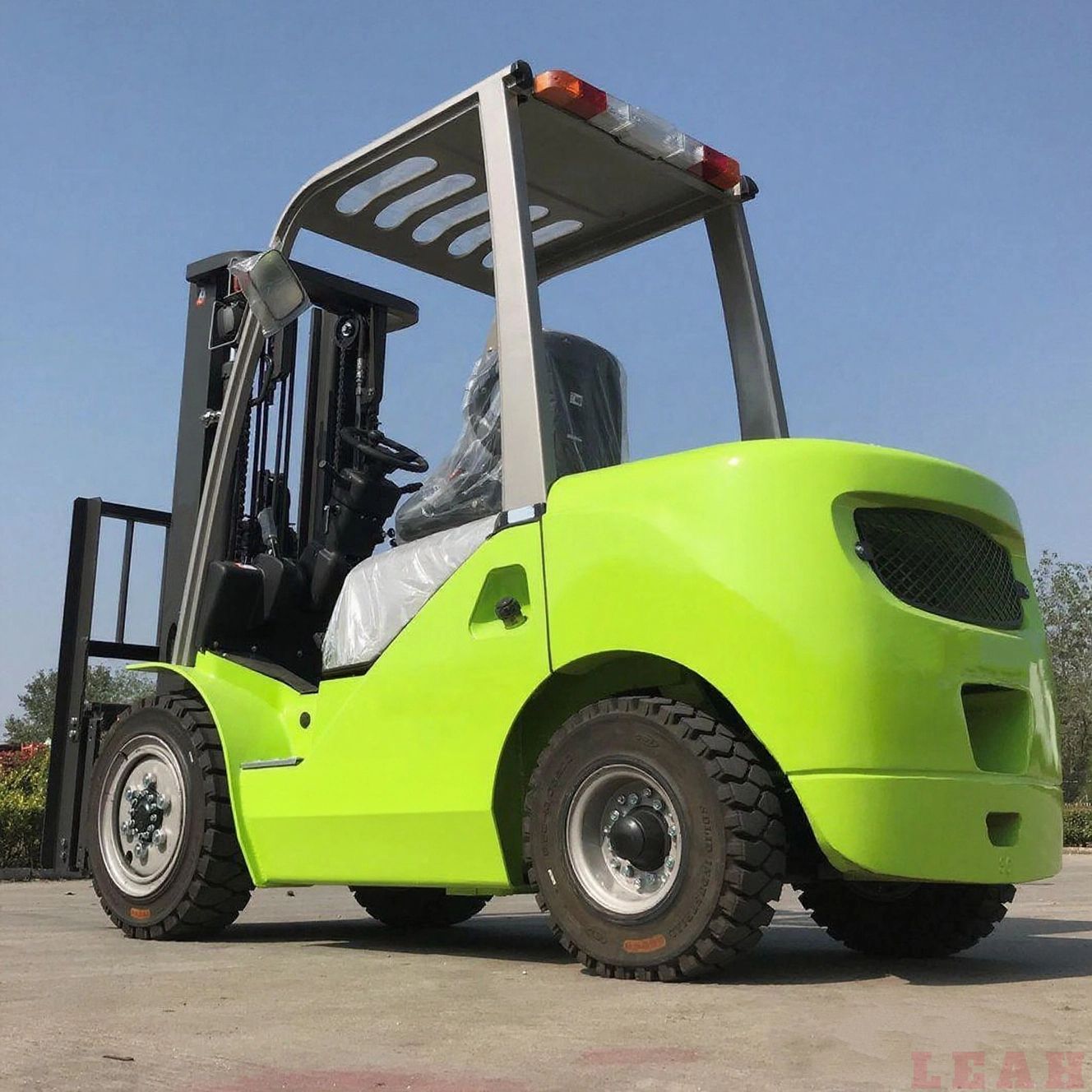Maintenance of Electric Forklifts
The maintenance of electric forklifts is core work to ensure their safe operation, extend service life, and reduce failure rates. It requires a combined mode of "regular preventive maintenance" and "daily fault inspection", covering key systems such as batteries, motors, electronic controls, brakes, steering, and hydraulics. The following details the electric forklift maintenance system from five dimensions: daily inspection, regular maintenance (classified by cycle), key points of key system maintenance, common fault handling, and maintenance safety specifications.
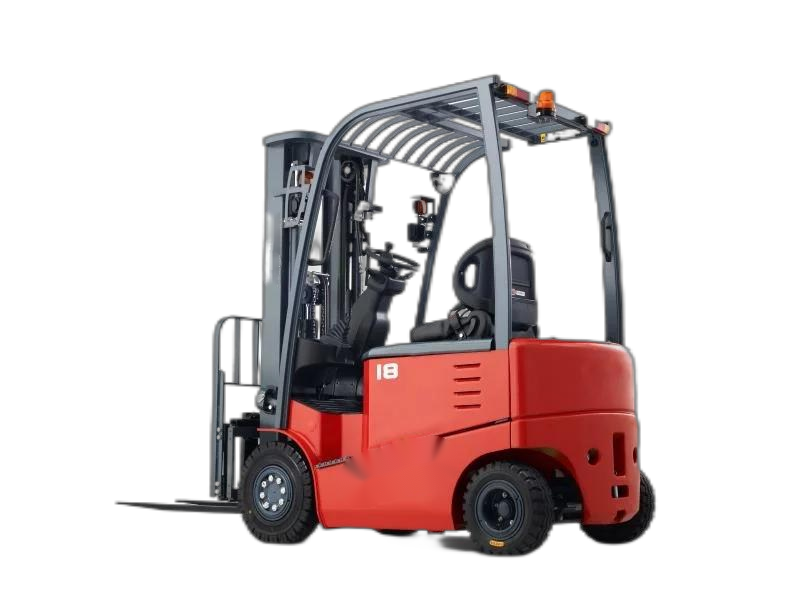
I. Daily Inspection: Mandatory Before Startup (5-10 Minutes)
Daily inspection is the first line of defense against faults. It shall be conducted by operators or maintenance personnel, focusing on checking "potential safety hazards" and "status of easily worn parts". The inspection results shall be recorded in the Daily Inspection Form for Electric Forklifts.
| Inspection Part | Inspection Items & Standards | Recommendations for Abnormal Handling |
|---|---|---|
| Battery System | 1. Battery liquid level (water-added batteries): The liquid level shall be 10-15mm above the plates, with no leakage or bulging; 2. Battery connection wires: No looseness or corrosion at the joints (clean with sodium bicarbonate solution if white spots appear); 3. Charging plug/socket: No damage or burning, and smooth insertion/extraction. | 1. Add distilled water (tap water is prohibited) if the liquid level is insufficient; 2. Polish corroded joints and apply Vaseline for rust prevention. |
| Appearance & Safety | 1. Forklift body: No obvious deformation or cracks; forks: No bending or wear (replace if the thickness wear exceeds 10%); 2. Safety devices: Horn, turn signals, warning lights, and reverse beeper function normally; 3. Seat belt: No breakage, and the buckle locks reliably. | 1. Stop operation and report for repair if forks are deformed; operation with faults is prohibited; 2. Stop use immediately if safety devices fail. |
| Brake System | 1. Service brake: When the brake pedal is pressed, the stroke is smooth (about 1/3-2/3 of the total stroke), with no deviation or abnormal noise; 2. Parking brake: After pulling the handbrake, the forklift does not slide on a 15° slope. | 1. Adjust the brake pad gap if the brake stroke is too large; 2. Check the tightness of the cable if the parking brake fails. |
| Steering System | 1. Steering wheel: No jamming or abnormal noise during rotation, and free stroke ≤ 30mm; 2. Steering wheels: No bulging or cracks on the tires, and normal tire pressure (refer to the forklift manual, generally 0.5-0.7MPa). | 1. Check the steering cylinder or tie rod if steering jams; 2. Replenish nitrogen (avoid air containing water) if tire pressure is insufficient. |
| Hydraulic System | 1. Hydraulic oil: The oil level is between the scale lines of the oil tank, and the oil is free from turbidity or blackening; 2. Hydraulic pipelines: No leakage at joints, and no aging or damage to oil pipes; 3. Lifting/tilting actions: When operating the handle, the forks lift stably without jamming, and the tilting angle meets the standard (generally 3°-5° forward tilt and 10°-15° backward tilt). | 1. Add hydraulic oil of the same model (e.g., ISO VG 46) if the oil level is insufficient; 2. Replace the sealing ring or joint if leakage occurs. |
II. Regular Maintenance: Classified by Cycle (Core Link)
The cycle of regular maintenance shall be adjusted according to the usage intensity of the electric forklift (daily operation time: light load ≤ 4h/day, medium load 4-8h/day, heavy load ≥ 8h/day). The following are general cycle standards; specific standards shall refer to the forklift manufacturer’s manual (considering brand differences such as Toyota, Jungheinrich, and Heli).
1. Short-Term Maintenance (Weekly/Every 50 Hours)
- In-depth battery inspection: Measure the single-cell voltage of the battery with a multimeter (standard voltage for lead-acid battery cells is 2.1V, with a deviation ≤ 0.05V). If the voltage of a single cell is too low, supplementary charging shall be conducted independently (to prevent "underperforming batteries" from affecting the entire battery pack);
- In-depth brake system inspection: Remove the brake drum/caliper, check the wear of brake pads (replace if the thickness ≤ 3mm), and clean dust on the brake pads (to avoid abnormal noise or brake failure);
- Hydraulic filter cleaning: Disassemble the return oil filter of the hydraulic oil tank, and backwash it with compressed air (0.4MPa). Replace the filter if it is damaged (to prevent impurities from entering the hydraulic pump);
- Lubrication of joints: Apply lithium-based grease (Model GB/T 7324-2010; ordinary grease is prohibited as it easily absorbs dust) to moving parts such as steering knuckles, fork carriage rollers, and mast slides.
2. Medium-Term Maintenance (Monthly/Every 200 Hours)
- Motor and electronic control system:
- Open the motor protective cover, clean dust inside the motor with compressed air (to prevent motor overheating due to dust accumulation), and check the wear of carbon brushes (replace if the length ≤ 5mm; use carbon brushes of the same model to avoid damaging the commutator);
- Check the terminal blocks of the electronic controller (e.g., Curtis, Zapi) for no looseness or burning. Measure the input/output voltage of the electronic controller with a multimeter (the input voltage is consistent with the battery voltage when no-load, and the output voltage is stable without fluctuation);
- Hydraulic system pressure detection: Measure the working pressure of the hydraulic system with a pressure gauge (the lifting pressure is generally 15-20MPa, and the tilting pressure is 8-12MPa). If the pressure is insufficient, check for wear of the hydraulic pump or failure of the relief valve;
- Comprehensive tire inspection:
- Solid tires: Check the tread pattern depth (replace if ≤ 2mm) and ensure no delamination or cracks on the tire body;
- Pneumatic tires: In addition to tire pressure, check for no deformation of the rim and no air leakage from the valve (detectable by applying soapy water).
3. Long-Term Maintenance (Quarterly/Every 500 Hours, or Annually/Every 2000 Hours)
- Battery system maintenance:
- Water-added batteries: Conduct "equalizing charging" once a quarter (after charging until the green light is on, continue trickle charging for 2-4 hours to eliminate single-cell voltage deviation);
- Lithium batteries: Measure the battery cycle life with a dedicated detector (the cycle life of lithium iron phosphate batteries is ≥ 2000 times; evaluate whether to replace if it is less than 1500 times), and check whether the BMS (Battery Management System) communication is normal (no error codes);
- Motor insulation detection: Measure the insulation resistance of the motor stator winding to the ground with a megohmmeter (shake meter) (≥ 50MΩ is qualified; dry the motor if < 10MΩ to avoid electric leakage);
- Hydraulic oil replacement:
- Drain the old hydraulic oil (drain while hot to facilitate the discharge of impurities with the oil), and clean the inside of the oil tank (wipe with lint-free cloth; cotton yarn is prohibited to avoid fiber residue);
- Add new hydraulic oil (must conform to the model recommended by the manufacturer, e.g., ISO VG 32 for winter and ISO VG 68 for summer). Filter the oil through an oil filter (filtration precision ≤ 10μm) when adding;
- Whole-vehicle wiring inspection: Check the insulation layer of the main wire harness (from battery to electronic controller, and from electronic controller to motor) for no aging or damage, and ensure no looseness of the clamps fixing the wire harness (to avoid short circuit caused by harness friction and damage);
- Structural part flaw detection: For load-bearing parts such as forks, masts, and frames, inspect the welds by visual inspection or penetration testing (PT) for no cracks or weld breaks (repair welding is required if there are cracks; after repair welding, grind to a smooth surface and perform stress relief).
III. Key Points of Key System Maintenance (Core Systems Prone to Faults and Affecting Safety)
1. Battery Maintenance: The "Heart" of Electric Forklifts, Accounting for 30%-40% of Total Costs
Charging specifications are core:
- Prohibit "overcharging" (after charging until the green light is on, the maximum trickle charging time shall not exceed 8 hours to avoid battery bulging);
- Prohibit "storage with low charge" (charge immediately when the power is below 20%; storage with low charge for more than 24 hours will cause "sulfation" of lead-acid batteries, leading to irreversible damage);
- Charging environment: Temperature 15-30℃, well-ventilated (charging in enclosed spaces is prohibited to avoid hydrogen accumulation and explosion);
- Special notes for lithium batteries: Prohibit collision or puncture of the battery box. If the battery bulges or leaks, stop using it immediately and contact professional manufacturers for handling (self-disassembly is prohibited to avoid fire).
2. Electronic Control System: The "Brain", Requiring Professional Tools for Fault Inspection
Common faults: Electronic controller errors (e.g., E01 - power fault, E05 - motor overcurrent). Use the manufacturer’s dedicated diagnostic instrument to read fault errors codes; blind replacement of parts is prohibited;
Maintenance taboos: Cut off the power supply when wiring the electronic controller. Prohibit washing the electronic control box with a high-pressure water gun (to avoid short circuit caused by water ingress; wipe the surface with a damp cloth if necessary).
Maintenance taboos: Cut off the power supply when wiring the electronic controller. Prohibit washing the electronic control box with a high-pressure water gun (to avoid short circuit caused by water ingress; wipe the surface with a damp cloth if necessary).
3. Brake System: Safety First, Avoid "Brake Failure"
- Hydraulic brakes (common in medium and large forklifts): Check for no leakage of the master brake cylinder/wheel cylinder, and ensure the brake fluid level is between the scale lines (use DOT3 or DOT4 brake fluid; mixing different models is prohibited);
- Electromagnetic brakes (common in small forklifts): Check the coil resistance of the electromagnetic brake (generally 50-100Ω; replace the coil if the resistance is abnormal), and adjust the brake clearance to 0.1-0.3mm (excessive clearance will cause weak braking).
IV. Common Fault Handling (Rapid Localization and Temporary Resolution)
| Fault Phenomenon | Possible Causes | Solutions |
|---|---|---|
| Forklift fails to start | 1. Insufficient battery power/loose joints; 2. Faulty key switch; 3. No power input to the electronic controller. | 1. Charge the battery or fasten the battery joints; 2. Measure the on-off status of the key switch with a multimeter and replace if faulty; 3. Check if the power wires of the electronic controller are loose. |
| Forks fail to lift or tilt slowly | 1. Insufficient hydraulic oil/contaminated oil; 2. Worn hydraulic pump; 3. Low relief valve pressure. | 1. Replenish/replace hydraulic oil; 2. Measure the output pressure of the hydraulic pump and replace the pump if the pressure is insufficient; 3. Adjust the relief valve pressure to the standard value. |
| Poor braking performance | 1. Excessive wear of brake pads; 2. Insufficient brake fluid/leakage; 3. Air in the brake pipeline. | 1. Replace the brake pads; 2. Replenish brake fluid and check for leakage points; 3. Bleed the brake system (bleed sequentially from the wheel cylinder to the master cylinder). |
| Motor overheating (exceeding 80℃) | 1. Excessive motor load (e.g., overloading operation); 2. Worn carbon brushes/carbon deposition on the commutator; 3. Faulty cooling fan. | 1. Reduce the load and stop for cooling; 2. Replace the carbon brushes and clean the carbon deposition on the commutator; 3. Check if the fan motor works normally. |
V. Maintenance Safety Specifications (Avoid Personal Injury)
- Maintenance with forklift stopped: Before maintenance, park the forklift on a flat ground, pull the handbrake, lower the forks to the ground, turn off the key switch, and unplug the battery plug (or turn off the main power switch);
- Battery operation safety:
- Use a dedicated spreader when handling batteries (to avoid crushing injuries caused by manual handling);
- Wear acid-resistant gloves and goggles when touching the battery (to avoid skin/eye corrosion by electrolyte; rinse with plenty of water immediately if contact occurs);
- Hydraulic system safety: Before disassembling hydraulic pipelines, release the pressure first (operate the handle until the forks fall naturally) to avoid injury from high-pressure oil injection;
- High-altitude operation safety: When maintaining the top of the mast, support the mast with a bracket (relying solely on the hydraulic lock is prohibited) to prevent the mast from falling suddenly.
Summary
The core logic of electric forklift maintenance is "prevention first, adjustment on demand": focus on "safety" in daily inspections, "service life of core parts" in regular maintenance, and "rapid localization" in fault handling. Meanwhile, an Electric Forklift Maintenance File shall be established to record the time, items, and replaced parts of each maintenance, facilitating traceability of equipment status and providing a basis for subsequent maintenance cycle adjustments. For complex faults (e.g., internal damage to the electronic controller or motor), it is recommended to contact the manufacturer’s authorized service station to avoid secondary damage caused by unprofessional operations.





